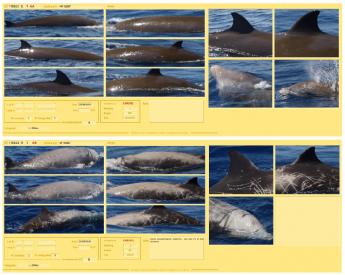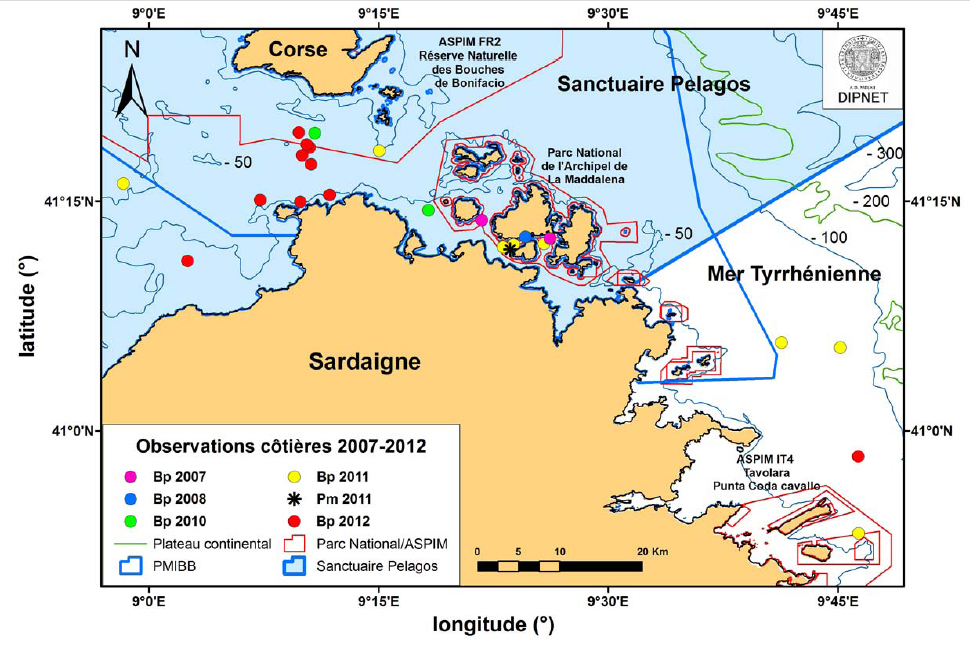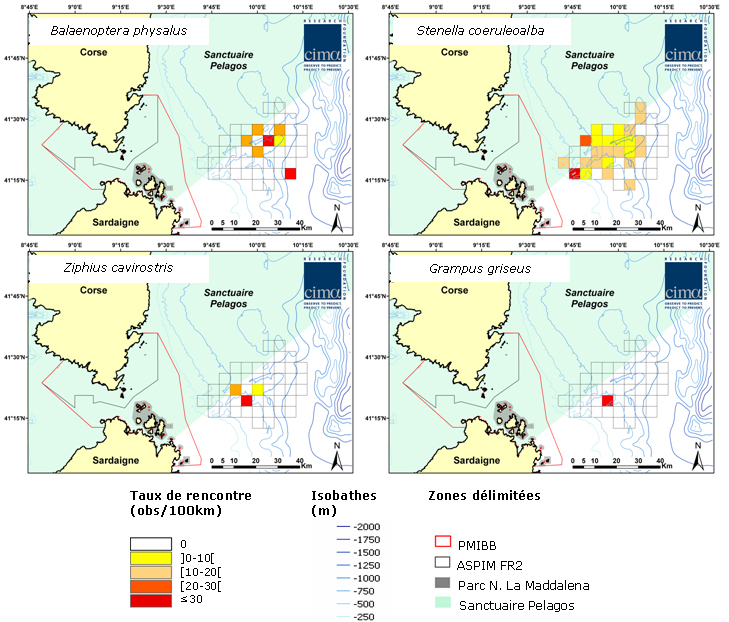Search
12/13: Study on the cetaceans of the north-eastern Sardinia.
"The cetaceans of the north-eastern Sardinia, a fundamental bio-resource of the National Park Archipelago of La Maddalena and the International Marine Park of Bonifacio Strait" is a study realized by DIPNET (Dipartimento di Zoologia e Genetica Evoluzionistica, Università di Sassari) in collaboration with CIMA research Foundation and RAC/SPA. It aimed to evaluate the presence of cetaceans belonging to the pelagic realm off the PMIBB (which includes the Italian MPA "National Park of the Archipelago of La Maddalena" and the French MPA "Natural Reserve of Bonifacio Strait"), just outside its eastern section. Indeed, as the waters of PMIBB are located at the southern border of the Pelagos Sanctuary (International Sanctuary for the Protection of Marine Mammals) and are a canal linking the Mediterranean basin north-west to the Tyrrhenian Sea, it is possible that we underestimate their richness in cetaceans and, consequently, their ecological importance for Pelagos Sanctuary's cetaceans.
The first part of the study has given an overview of the scientific work undertaken in pelagic waters in the study area and has highlighted three important aspects:
- the presence of fin whales, striped dolphins and Risso's dolphins in the western PMIBB
- the abundance of cetaceans in the South of the study area (between Olbia, Sardinia, Civitavecchia, Italy mainland),
- the regular presence of Cuvier's beaked whales in the East of PMIBB.
The second part of the study has collected a list of the sightings made by third parties between 2007 and 2012. All archived reports clearly indicates that the coastal area at the East of Bonifacio Strait is regularly frequented by fin whales each year. All observations were in shallow water (less than 100 m) during the beginning of the year (January to April) or sometimes in August. The observations made in 2010 by a whale-watching company were also taken into account and the information obtained were used to quantify the encounter rate of cetaceans in the study area: 7.05 observations 100 km (by species: ERSc=4,53 obs/100km, ERPm=1,17 obs/100km, ERBp=0,84 obs/100km, ERZc=0,34 obs/100km, ERGg=0,17 obs/100km).
Finally, the third part of the study aimed to collect new data following a sampling strategy adapted to the main objective of the project and to analyze it. Ten one-day surveys were conducted from August 2011 to March 2012 during which it was possible to travel 623 kilometers on-effort (totaling 38.6 hours of navigation on-effort) and to observe 65 groups or single individuals of cetaceans. The overall Encounter Rate (ER) was 10.4 observations on 100 km and results confirmed that the South East area off the PMIBB is very favorable to the observation of four pelagic species: striped dolphin, fin whale, Risso's dolphin and Cuvier's beaked whale. Moreover, the ER calculated by species were relatively higher than those reported for the Ligurian Sea. According to the observations made in the study area, it appears that the area is used by fin whales as feeding ground and transit area and by Cuvier's beaked whales as breeding area. In addition, three out of the four encountered pelagic species can be photo-identified, which confirms the potential of further monitoring in this area in order to better assess the ecological importance of the waters off PMIBB for the conservation of the Pelagos Sanctuary's cetaceans.






Find Us On...